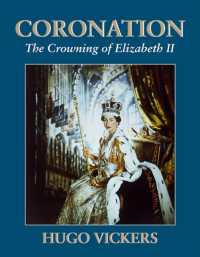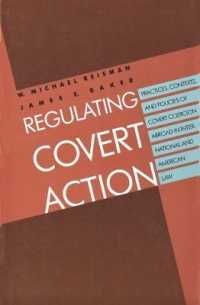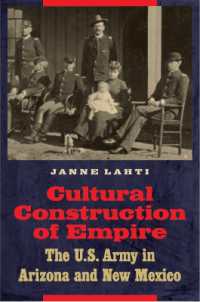Description
Discourse Analysis provides an essential and practical introduction for students studying modules on the analysis of language in use. It explores the ways in which language is used and organised in written and spoken texts to generate meanings and takes into account the social contexts of production, and the social roles and identities of those involved.
Investigating the ways in which language varies according to subject, social setting, and communicative purpose, this book examines various forms of speaking and writing, including casual conversation, speeches, parliamentary debate, computer-mediated communication, and mass media articles. It discusses topics including how we convey more than we actually say or write, the role of politeness and impoliteness in communication, and what makes texts cohesive and coherent. It also shows how particular aspects of discourse analysis can be assisted by corpus methods and tools.
Taking students through a step-by-step guide on how to do discourse analysis that includes the collection of data and presentation of results, the book also documents a text analysis project from start to finish. Featuring a range of examples and interactive activities, as well as additional online support material, this book is key reading for those studying discourse analysis modules.
Table of Contents
Acknowledgements
Figures
Tables
Activities
QR codes
IPA chart
Chapter 1
Discourse: Language, context, and choice
Introduction
What is discourse?
What is discourse analysis?
The nuts and bolts of discourse
Morphology
Phonology
Lexis
Lexical creativity
Graphology
Syntax
Semantics
Discourse
Text
窶路ave you sheeted?窶� 窶� discussion
Discourse communities
Meaning potential
Understanding context
Expanding context (the role of background knowledge)
Context and relevance
Co-text
Spoken and written discourse
Discourse markers
Standard English (or the issue of convention)
Sociolinguistic Variables
Conclusion
Further Reading
Resources
References
Chapter 2
Organising Discourse: Thematic and information structure
Introduction
Organising discourse
Structure of the English clause
Subject and Predicator
Non-canonical Subjects
Object
Complement and Adjunct
Passive clauses
Summary of clause structure
Thematic structure
Theme and Rheme
Theme in declarative clauses
Subject as Theme
Marked themes
Theme in interrogative and imperative clauses
Marked themes
Theme in complex sentences
Compound Themes
Continuatives
Conjunctions
Conjunctive and modal adjuncts
Vocatives
Multiple elements
Special Themes
Clefting
Pseuodo-clefts
Fronted or preposed themes
Passive clauses
Information structure: Given and New
What is Given-New information?
Signalling Given-New information
Given-New and Theme and Rheme
Given injustice: the case of Derek Bentley
Given-New in spoken English
Stress and prominence
Given-New and special Themes
Conclusion
Answers to the activities
References
Chapter 3
Organising Information in Discourse: Cohesion
Introduction
Coherence and Cohesion in discourse
Reference
Endophoric versus exophoric reference
Endophoric reference: anaphora and cataphora
Personal, demonstrative, and comparative reference
Personal reference
Demonstrative reference
Comparative reference
Ellipsis and Substitution
Ellipsis
Substitution
Conjunction
Temporal
Additive
Adversative
Causal
Coordinating conjunctions
Conjunction summary
Reiteration (lexical cohesion)
Conclusion
Answers to activities
References
Chapter 4
Analysing spoken discourse
Introduction
How spoken discourse is analysed
Data used in this chapter
Spoken Interactions
Prosody in spoken discourse
Pauses
Intonation
Other prosodic features
Syntax
Turns, turn-taking and turn transition
Turns
Turn taking
Turn transition
Functional analysis of turns
Acts and actions
Form and function
Sequencing
Adjacency pairs
Support Acts
Sequence expansion
Sequence Coupling
Pairs with three parts
Preferred/dis-preferred responses
Backchannels
Overlapping talk
Summary of transcription conventions
Conclusion
Further reading
Resources
Answers to activities
References
Chapter 5
Analysing meaning in discourse
Introduction
What do we mean by meaning?
Conceptual meaning
Signifier, signified and referent
Connotative meaning
Affective meaning
Social meaning
Reflected meaning
Collocative meaning
Working out meaning in discourse: co-text and context
Entailment
Presupposition
Existential presuppositions
Logical presupposition
Lexical triggers
Syntactic triggers
Testing presuppositions
Presupposition and propositions
Presupposition and entailment
Conclusion
Further Reading
Answers to Activities
References
Chapter 6
Meaning and context
Introduction
What is pragmatics?
Implicature
Cooperative principle
Maxims
Flouting maxims
Flouting the maxims of Quantity
Flouting the maxims of Quality
Flouting the maxim of Relation
Flouting the category of manner
Violating maxims and opting out
Violate
Explicitly opt out
Infringement of maxims
Doing Implicatures in real discourse: Memes
Context, culture, and implicature
Conclusion
Further reading
References
Chapter 7
Politeness
Introduction
Face
Face threats and face-work
Using politeness strategies to mitigate face-threatening acts
On-record FTAs
Off-record strategies
The humble 窶鷲edge窶�
Non-linguistic considerations
Power (P)
Social distance (D)
Ranking of imposition (R)
A short analysis of football press conferences
Conclusion
Further reading:
Answers to activities
References
Chapter 8
Metaphorical meanings in discourse: Metaphor and Metonymy
Introduction
What is a metaphor?
The conceptual basis of metaphors
The experiential basis of metaphors
Novel metaphors
Analysing the 窶鷲iving窶� metaphor
What do we map and why?
Novel metaphors in song lyrics
Extended metaphors
Metaphors in political discourse
Metonymy
Within-domain mapping
Metonymy or metaphor?
Ubiquity of metonyms
Metonymy and worldview
窶婁arenymy窶�
Metaphors and Metonymies
A 窶藁oo窶� point
Conclusion
Further Reading
Answers to activities
References
Chapter 9
Representing experience in discourse
Introduction
Sentences and clauses
Telling and retelling
Different ways of telling
Another way of telling:
Nominalisation
Passives
The transitivity model
Representing 窶亙nner窶� and 窶椀uter窶� experience
Material processes
Circumstances
Mental Processes
Representing 窶�states窶� of being and 窶鷲aving窶�: Existential and Relational Processes
Existential processes
Relational processes
Verbal Processes
The discourse situation
Case Study: A case of domestic violence
To convict or not to convict?
Analysing the initial crime report
Analysing the summary report (MG3) of the domestic violence crime
Relational processes in the MG3 account of the crime
Analysing the police Gatekeeper窶冱 contribution to the case
Conclusion
Further Reading
Answers to activities
References
Chapter 10
Presenting other people窶冱 speech, writing and thought
Introduction
What is discourse presentation?
Discourse presentation and different voices
Report, representation and presentation
Different types of discourse presentation
Direct Speech, Writing and Thought (DS/DW/DT)
Indirect Speech, Writing and Thought (IS/IW/IT)
Reporting clauses
Free Indirect Speech, Writing and Thought (FIS/FIW/FIT)
Presentation of Speech, Writing and Thought Acts (PSA/PWA/PTA)
Presentation of Speech, Writing and Thought (PS/PW/PT)
Summary
Attribution of source of original
Legitimation
Faithfulness
Conclusion
Further reading
Answers to activities
References
Chapter 11
Corpus linguistics and discourse analysis
Introduction
Corpus linguistics
What is a corpus?
What is corpus linguistics?
Corpus linguistics and discourse analysis
Sampling, representativeness and language variety
Language variety
Sampling
Representativeness
Corpus not always required!
Using corpus methods to analyse corpora
Word frequency analysis
Word frequencies and language change across time
Wordlists ranked by frequency
Concordance analysis
Sorted concordances
Categorising results
Making comparisons between corpora
Choosing a suitable reference corpus
Comparing LHRC against ICE-FLOB
Keyness and keywords
Statistical significance
Effect size: measuring the scale of the difference
Keyness
What counts as a keyword? Using statistical cut-offs to decide
Keywords in LHRC
Intra-corpus comparison
Collocation
Calculating collocates
Using statistical cut-offs to decide what counts as a collocate
Statistically salient collocates of 窶�was窶� in LHRC
N-grams
N-grams in the LHRC
Conclusion
Further Reading
Corpus tools
Corpora
Answers to Activities
References
Chapter 12
Doing a project in discourse analysis
Introduction
Thinking about discourse as the focus of a project
Systematicity and the three 窶漏窶冱窶� of research
Ethics
Informed consent
Observer paradox
Anonymity
Copyright
Developing a research project
Deductive and inductive research
Hypotheses
Objectives and research questions
Defining terms
Controlling variables
Data
Analysing your data
Writing up your research 窶� doing academic discourse
Conclusion
Further reading
Answers to activities
References
Appendices
Appendix 1 Sample statement declaring consent for a study
Appendix 2 Information for participants
Index








